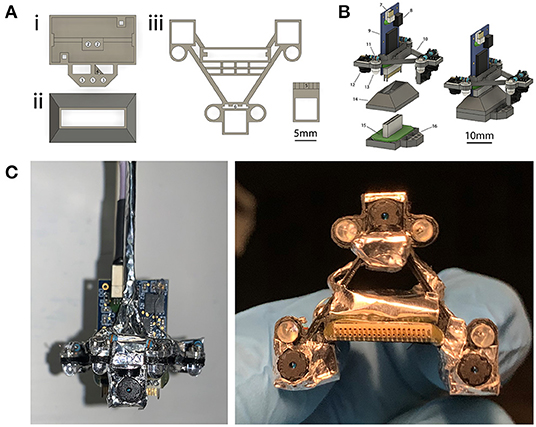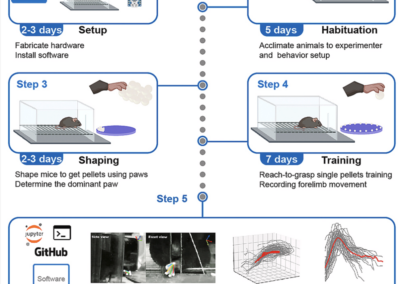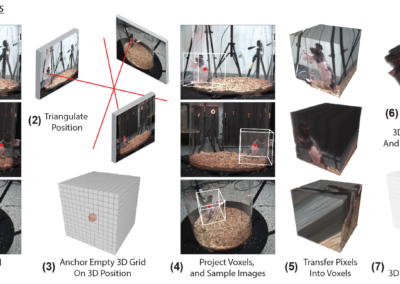Published in a recent Frontiers in Neuroscience article, researchers Nicholas Sattler and Michael Wehr from the Institute of Neuroscience at University of Oregon took to developing and utilizing two multi-camera head mounts for mice in order to record physiological changes in certain behaviors. The affordability and resolution of visuals are an advancement for rodent studies in behavioral neuroscience. ________________________________________________________________ Mice move quickly and constantly. By developing a two-camera and four-camera head mount, Sattler and Wehr created two effective designs for video-tracking of rodents. The intention was that the mechanism by which they would be able to record import visual information that is reproducible and does not interfere with the rodent’s behavior. The four – camera system uses four integrated, ultra-miniature analog cameras attached to a 3D- printed model (figure 1) that is secured to an Intan 32-channel electrophysiology headstage. Two of the cameras view the ears, an overhead camera captures the eyes, whiskers, and rhinarium, and the final camera records the forward visual field of the mouse. The two – camera system is an overhead headset that uses independent, bilateral analog cameras focusing on each pupil of the mouse. Its independent cameras also mean that, compared to the integrated four- camera setup, if one camera goes offline, the other one does not. The apparatus is mounted with steel wire and cement rather than a 3D print, and it can be combined with the Intan headstage for recording electrophysiological signals. The electrophysiological and visual signals from each setup are intercepted and synchronized by an Arduino. That data is then gathered and processed by a Bonsai software that adds a timestamp and adjusts light balance. In order to mitigate inaccuracies in the brain implants, Sattler and Wehr also used the opensource RatHat on eNeuro by Allen and colleagues for 3D-printed and self-targeting stereotactic brain implant models. What makes this research special is that the lightweight (180 mg) and relatively inexpensive ($23) essential components of each design are able to capture high resolution visuals without disturbing the test subject and at the same time making it affordable enough to be reproduced by others. Sattler and Wehr pointed out that all designs are susceptible to unpredictable things, and their apparatus was not excluded. For this reason, they warn that any camera headset should work with design considerations in mind. The researchers were able to capture and use the video recordings, which took place during instances of hunting, courtship, exploring, and other physical activities, to afford other researchers and readers with multidimensional and comprehensive aggregate of physiological responses correlating to behavioral manifestations as a result of the environment. This type of study can be used most effectively in conjunction with research pertaining to neurotransmitters and neuroendocrinology to create a holistic perspective with behavioral neuroscience analysis at its focus. This research tool was created by your colleagues. Please acknowledge the Principal Investigator, cite the article in which the tool was described, and include an RRID in the Materials and Methods of your future publications. RRID:SCR_021591 Read more about this head-mounted multi-camera video recording system in Frontiers in Neuroscience. Get access to the build list and 3D files from the supplementary files of the paper. This post was brought to you by Nicholas Loeb. This project summary is a part of the collection from neuroscience undergraduate students in the Computational Methods course at American University. Check out projects similar to this!A Head-Mounted Multi-Camera System for Freely-Moving Mice

Device Publication
Read the Documentation
Thanks Nick!
Have questions? Send us an email!







